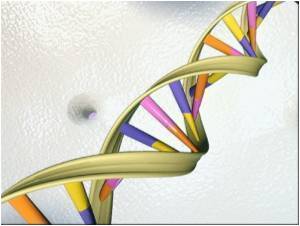A gene involved in neurodegenerative disease also plays a critical role in the proper function of the circadian clock, according to Northwestern University scientists.

The discovery is particularly interesting because mutations in the human Ataxin-2 gene are known to cause a rare disorder called spinocerebellar ataxia (SCA) and also contribute to amyotrophic lateral sclerosis (ALS), also known as Lou Gehrig's disease. People with SCA suffer from sleep abnormalities before other symptoms of the disease appear.
This study linking the Ataxin-2 gene with abnormalities in the sleep-wake cycle could help pinpoint what is causing these neurodegenerative diseases as well as provide a deeper understanding of the human sleep-wake cycle.
Ravi Allada, M.D., professor of neurobiology in the Weinberg College of Arts and Sciences, and Chunghun Lim, a postdoctoral fellow in his lab, are authors of the paper.
Period (per) is a well-studied gene in fruit flies that encodes a protein, called PER, which regulates circadian rhythm. Allada and Lim discovered that Ataxin-2 helps activate translation of PER RNA into PER protein, a key step in making the circadian clock run properly.
"It's possible that Ataxin-2's function as an activator of protein translation may be central to understanding how, when you mutate the gene and disrupt its function, it may be causing or contributing to diseases such as ALS or spinocerebellar ataxia," Allada said.
Advertisement
Ataxin-2 is the second gene in a little more than two years that Northwestern researchers have identified as a core gear of the circadian clock, and the two genes play similar roles.
Advertisement
Allada and Lim wanted to better understand how twenty-four works, so they looked at proteins that associate with twenty-four. They found the twenty-four protein sticking to ATAXIN-2 and decided to investigate further. In their experiments, Allada and Lim discovered the Ataxin-2 and twenty-four genes appear to be partners in PER protein translation.
As is the case in a mutation of the twenty-four gene, when the Ataxin-2 gene is not present, very little PER protein is found in the circadian pacemaker neurons of the brain, and the fly's sleep-wake rhythm is disturbed.
The findings will be published May 17 in the journal Science.
Source-ANI










